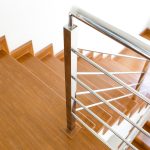Welding is the joining of metals using fusion. This is distinct from brazing or soldering which are lower temperature techniques for joining metal. These techniques do not melt the base metal, so they do not actually create true fusion in the sense of making a new piece of metal. A weld does melt the base metal. Also, in addition to this, a filler is oftentimes added to create the weld pool which is a pool of molten metal. When it cools, it forms a joint.
The techniques used differ depending on available resources, atmospheric factors, needs, as well as many other factors. For these reasons, welding in Minneapolis would sometimes be different from those used in Sao Paolo. The environmental factors alone would be drastically different. Also, the materials created in Brazil would need to withstand much higher daily temperatures than those in Minnesota.
History
Joining metals dates back several thousand years. The earliest instances come from Europe and the Middle East during the Bronze and Iron Ages. Herodotus claims that a Greek named Glaucus of Chios invented the process in the 400s BCE. The pillar at Delhi, a fourth-century CE iron pillar weighing over five tons, was constructed with early welds.
During the Middle Ages, blacksmiths would pound hot metals together until they formed a bond. This was not quite the same process in its truest sense, but it did bond the base metals.
Modern Processes
The short pulse electrical arc was discovered by Sir Humphry Davy in 1800. Russian scientist Vasily Petrov discovered the continuous electric arc two years later. He found that a continuous electric arc could be used to melt metals. Based on this research and subsequent research, Stanislaw Olszewski and Nikolai Benardos invented the first arc welder in 1881. Later scientists invented metal electrodes which created a more stable arc. Then, scientists released coated electrics which produced an even more stable arc. The technology began to progress very quickly from there.
Other techniques were developed around the same time. Resistance welding was being first patented in 1885. A technique utilizing thermite was created in 1893. The first acetylene torch was developed in 1900. Acetylene had been uncovered in 1836, but it was not useful until 1900.
The different processes were all in use at the same time as governments sought to determine which of the processes was most effective. World War I caused great interest in discovering this. Great Britain preferred to use arc techniques, even going so far as to make an entirely welded hull warship. The Germans used the arc process to create some airplane fuselages. In Poland in 1928, the first welded road bridge was built near Lowicz Poland. The 1920s saw great advancement in the process, much of which came from use in WWI.






